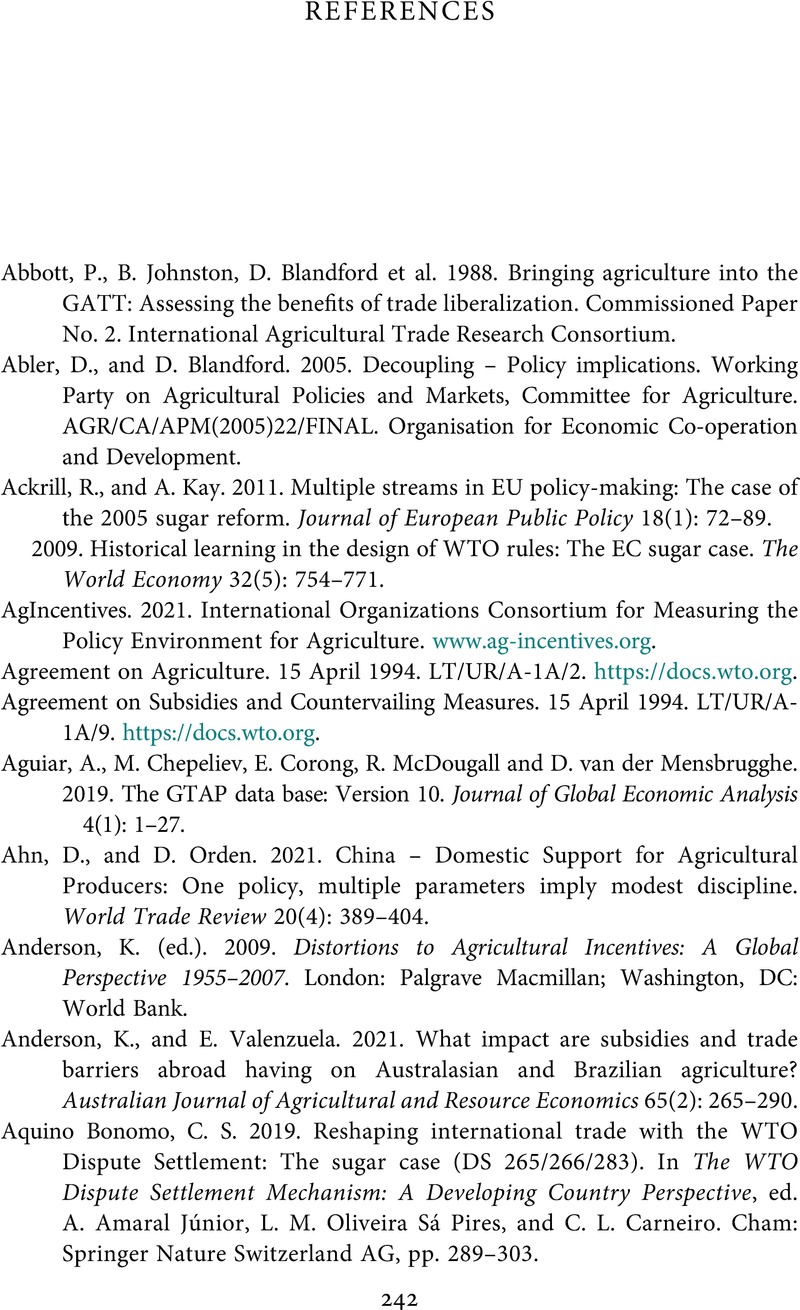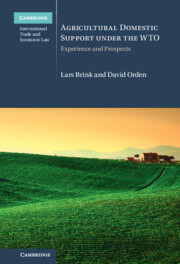Book contents
- Agricultural Domestic Support under the WTO
- Cambridge International Trade and Economic Law
- Agricultural Domestic Support under the WTO
- Copyright page
- Dedication
- Contents
- Figures
- Tables
- Foreword
- Acknowledgments
- Table of Cases
- Abbreviations
- 1 Introduction
- 2 Domestic Support Disciplines of the Agriculture and SCM Agreements
- 3 Economic Analysis of Exemptions and Administered Prices
- 4 Trends among Different Types of Domestic Support
- 5 Transparency
- 6 Issues under Negotiation
- 7 Disputes Involving Agricultural Domestic Support
- 8 Addressing Twenty-First-Century Policy Priorities
- 9 Lessons from the Experience
- References
- Index
- References
References
Published online by Cambridge University Press: 09 February 2023
- Agricultural Domestic Support under the WTO
- Cambridge International Trade and Economic Law
- Agricultural Domestic Support under the WTO
- Copyright page
- Dedication
- Contents
- Figures
- Tables
- Foreword
- Acknowledgments
- Table of Cases
- Abbreviations
- 1 Introduction
- 2 Domestic Support Disciplines of the Agriculture and SCM Agreements
- 3 Economic Analysis of Exemptions and Administered Prices
- 4 Trends among Different Types of Domestic Support
- 5 Transparency
- 6 Issues under Negotiation
- 7 Disputes Involving Agricultural Domestic Support
- 8 Addressing Twenty-First-Century Policy Priorities
- 9 Lessons from the Experience
- References
- Index
- References
Summary

- Type
- Chapter
- Information
- Agricultural Domestic Support Under the WTOExperience and Prospects, pp. 242 - 257Publisher: Cambridge University PressPrint publication year: 2023



